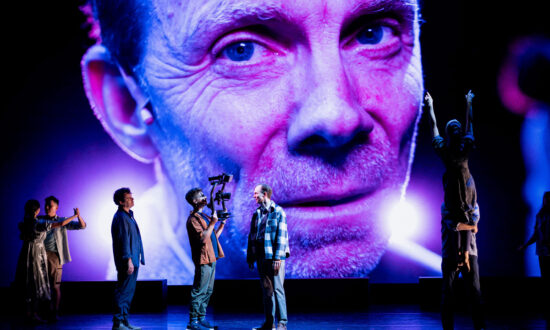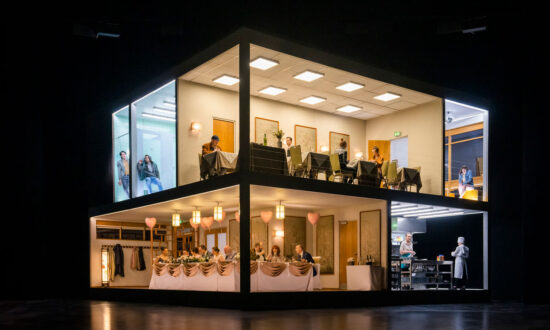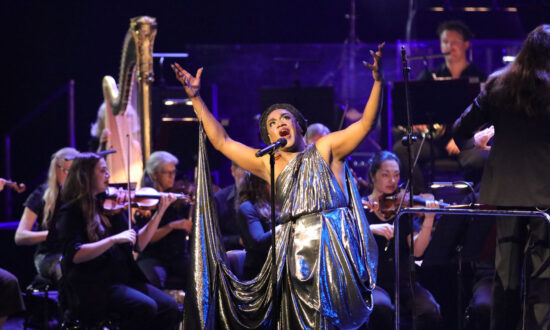Sex and Death_ and the Internet requires an uncommon dose of courage.
The set-up is straightforward. Audience members arrive and listen to a brief audio recording before being led into a private, darkened room where a computer awaits. Through the unfathomable magic of bytes and internet signals, participants are connected with a non-professional performer – a person in their 70s – who orchestrates an intimate conversation guided by a series of personal questions chosen from a virtual deck of cards.
The uncomplicated premise is deceptive. For audiences habituated to passivity in art experiences, the request to contribute, especially in a way that is honest and revealing, is confronting.
The same is surely true for the performers. While they have rehearsed and interrogated the concept with the work’s creator and director, Samara Hersch, as they sit down for each engagement there is an element of uncertainty. As with any conversation of depth, around the edges there hovers the possibility of misunderstanding, or – much worse – disrespect.
This need for courage on both sides is deliberately fostered by Hersch and the creative team. Taking the leap together bonds participant and performer, setting the stage for their joint vulnerability to transform into a sense of connection as the questions and answers roll.
These quietly influential measures are behind Sex and Death_ and the Internet’s success. It is tempting to look at the experience and assume the artist has embraced courage, too, by ceding control of their work and handing it over to a stranger and a non-professional. But in reality, Hersch’s hand is gently present at every turn.
From the introductory audio recording, which features kids reflecting on the process of ageing and how time has differentiated them from their former selves, Hersch takes charge of the experience. These insights prime the audience to engage with the larger themes of the work before they’ve even met their performer counterpart.
Hersch understands the enormity of the awkward barrier she is faced with in bringing two strangers together, particularly through a virtual medium. She navigates this through a set of carefully designed rules. These practical instructions insist that the performer and participant take turns asking each other questions, removing the potential for shyness or verbosity to unbalance the experience.
The drafting of the questions is where Hersch is at her most powerful. Each achieves a delicate balance. Ostensibly about the big life topics, like sex, love, death, family and regret, they’re also coded to facilitate reflection on social norms and progress. This discussion is where the intergenerational crossover comes to the fore – participant and performer can learn from each other’s perspective in a space where empathetic listening feels delightfully compulsory.
It strips away the burden of social niceties
The downside of the structured conversation is the unavoidable limits it imposes. As the performer speaks of their life – of who and how they love, what they know of death, of the things they want to change about themselves – an organic curiosity flares. A desire to interrogate more mundane topics, to ask what kind of situation they grew up in, or to follow up answers with further questions, is snuffed out by the strictures of the format. It’s hard to imagine a fail-safe way around this, but the result is an incongruous sense of simultaneous depth and superficiality. We aren’t socialised to know nothing about a person except their most fundamental ideas, and the lack of context has a strange muting effect on the interaction’s emotional intensity.
This rippling but quiet undercurrent of contrivance is not dispelled by the work’s environment or by its crescendo. The set-up of the room itself, which is swathed in dark curtains but features a bright white catwalk leading to the computer desk, feels like an indecisive aesthetic. It is neither fully stylised nor completely at ease with reflecting the everyday. The online interface is excellently functional and intuitive, and looks contemporary and relevant, but it feels remote from the purpose of the work. The visual trappings don’t speak to the nature of the experience, which might be reflective of the adaptive nature of this version of the work. Perhaps the pre-COVID, in-person iteration had a more unified design.
It’s impossible to know, as well, if the culmination of the work would have more punch in the original. It involves the participant reaching deep in self-reflection, and then a process whereby the performer mirrors the participant’s insights back at them. While still a moment steeped in kindness and care, the resonance was diluted by the distracting practicalities of it all.

Get InReview in your inbox – free each Saturday. Local arts and culture – covered.
Thanks for signing up to the InReview newsletter.
Despite the anti-climax, Sex and Death_ and the Internet still shines. Its strength is its ability to bring simplicity to the complexity of human interaction. It strips away the burden of social niceties and leaves behind curiosity and gentleness, enabling two people who might not ever have otherwise spoken to truly see each other.
Sex and Death_ and the Internet is on at Union House in the University of Adelaide from March 9-20 as part of the Adelaide Festival.
Click here for more 2022 Adelaide Festival coverage.
Support local arts journalism
Your support will help us continue the important work of InReview in publishing free professional journalism that celebrates, interrogates and amplifies arts and culture in South Australia.
Donate Here




